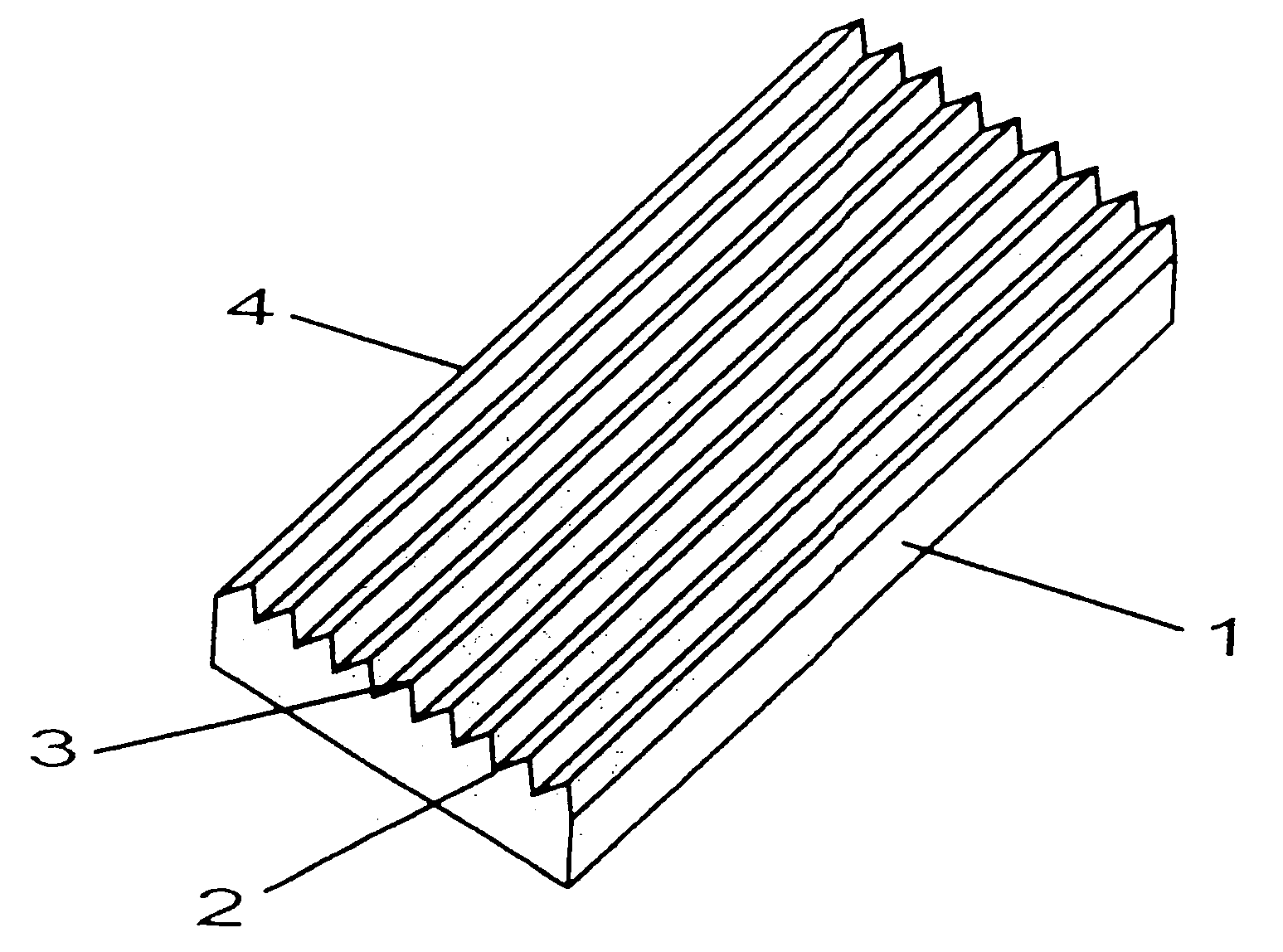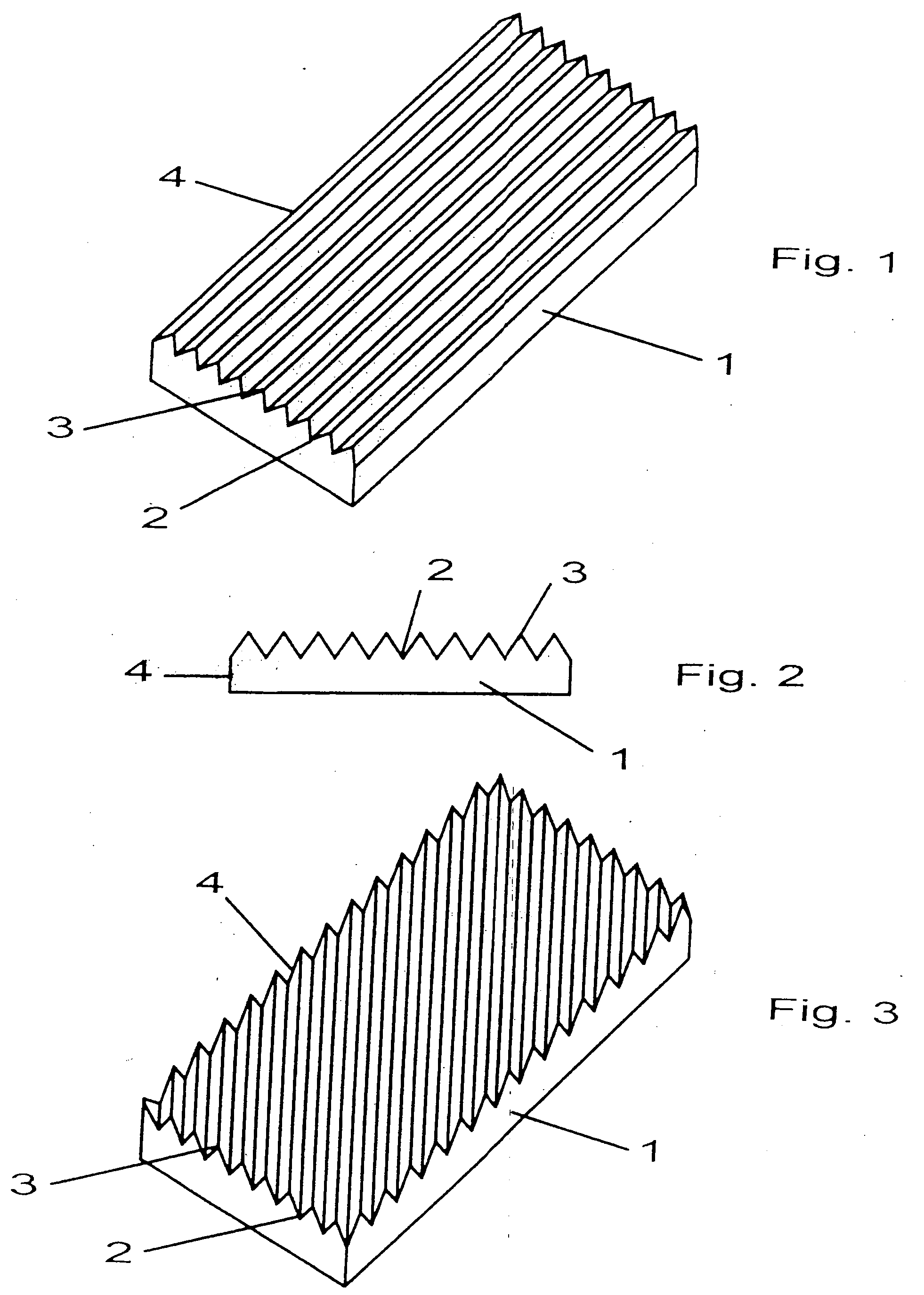Method for shaping concrete blocks and/or concrete slabs
a technology for concrete blocks and concrete slabs, applied in the direction of molds, shaping presses, climate change adaptation, etc., can solve the problems of too severe damage to the surface, achieve the effect of enhancing the safety of walking, and reducing the risk of injury
- Summary
- Abstract
- Description
- Claims
- Application Information
AI Technical Summary
Benefits of technology
Problems solved by technology
Method used
Image
Examples
Embodiment Construction
[0011]In FIGS. 1 to 5, insofar as individually illustrated, reference character 1 identifies a concrete slab that exhibits a longitudinal and a transverse extension and is fashioned as a rectangle. The concrete slab was fabricated by one of the shaping methods described herein, wherein the die associated with the concrete slab or the matrix in the corresponding working system has grooves and tooth strips that form corresponding grooves 2 and tooth strips 3 on the surface of concrete slab 1. Slabs 1 can, however, also be fabricated with planar-surfaced dies, grooves 2 being fabricated by a milling operation. In correspondence with the disposition of grooves and tooth strips on the dies, the grooves 2 and the tooth strips 3 on concrete slab 1 have exhibit arbitrary shapes and designs. Grooves 2 and tooth strips 3 of the concrete slab according to FIGS. 1 and 2 are aligned parallel to one longitudinal edge 4 of concrete slab 1, while grooves 2 and tooth strips 3 on the surface of concr...
PUM
| Property | Measurement | Unit |
|---|---|---|
| size | aaaaa | aaaaa |
| angle | aaaaa | aaaaa |
| triangular shape | aaaaa | aaaaa |
Abstract
Description
Claims
Application Information
 Login to View More
Login to View More - R&D
- Intellectual Property
- Life Sciences
- Materials
- Tech Scout
- Unparalleled Data Quality
- Higher Quality Content
- 60% Fewer Hallucinations
Browse by: Latest US Patents, China's latest patents, Technical Efficacy Thesaurus, Application Domain, Technology Topic, Popular Technical Reports.
© 2025 PatSnap. All rights reserved.Legal|Privacy policy|Modern Slavery Act Transparency Statement|Sitemap|About US| Contact US: help@patsnap.com



